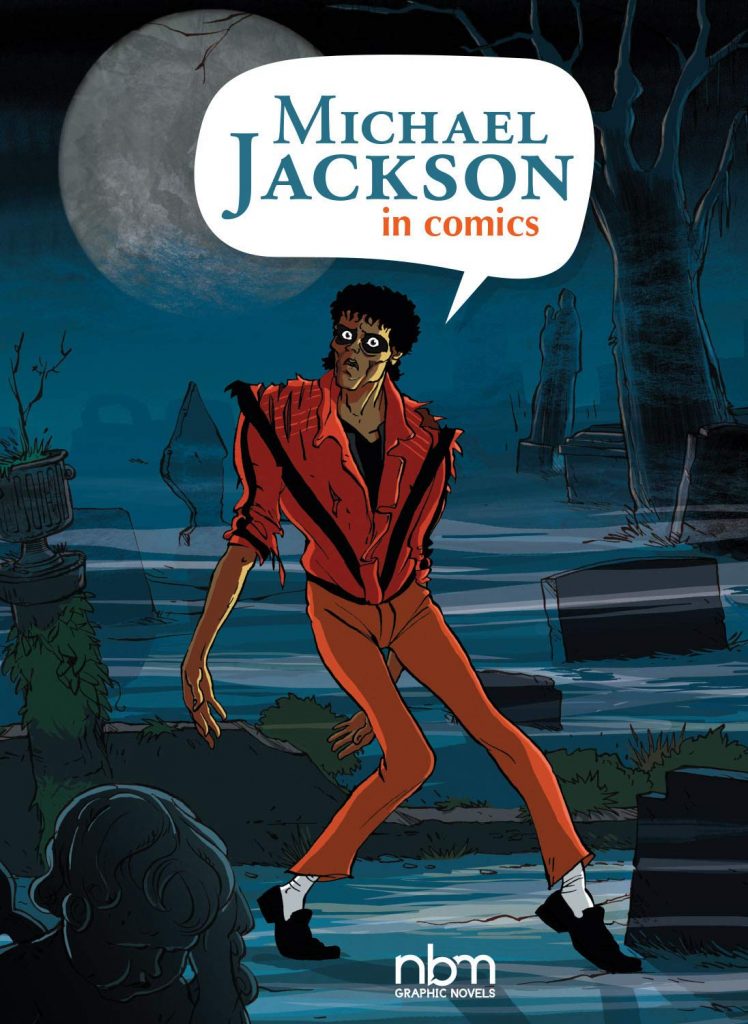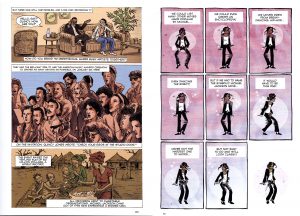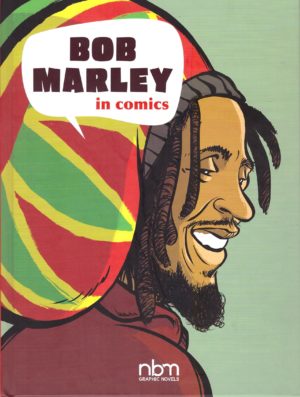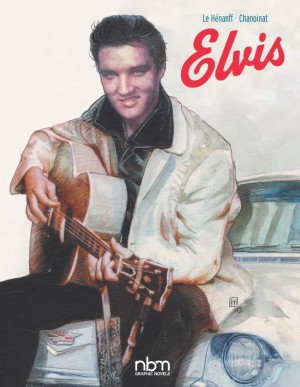Review by Frank Plowright
French publisher Petit á Petit has created a market for biographies of music acts broken down into chapters drawn by assorted artists and accompanied by contextualising articles. Michael Jackson, however, presents a challenge not as relevant to previous subjects, as he died with controversy still hanging over him, the truth far from established.
It’s not as if Jackson’s young life was free from controversy either, it’s just that no-one knew about it at the time, and the early chapters freely mention Joe Jackson’s domineeringly violent idea of parenthood. Otherwise the early chapters spend a lot of time focusing on the people Michael admired, such as James Brown and Diana Ross, and those whose skills helped him on his way, such as Quincy Jones and Motown house band the Funk Brothers. Considering writer Céka (Erick Lasnel) thought them important enough to merit a chapter to themselves, it’s a shame the likes of Benny Benjamin, James Jamerson, Earl Van Dyke or Robert White aren’t actually named.
Céka takes a varied approach to the writing, changing styles frequently over the 22 chapters, some strictly biographical, others using more imaginative storytelling methods, such as captions narrating the origins of the Thriller video laid over scenes as it plays out. Unfortunately, in Guillaume Griffon, it features one of the less talented cartoonists contributing. Bast, whose cover version is far better, is given the surreal story of Jackson’s pets to illustrate. As in the previous musical biographies (see recommendations), cartooning is the art style of choice, but as seen from the sample art alone, that’s a broad church. The looseness of Vox on the birth of Céka’s own Jackson infatuation is completely different to the charms of a cleaner sitting in Jackson’s chair as per Kyung-Eun Park, and neither resembles the retro-stylings of Anthony Audibert. Were it not for the credits, you’d not know Clément Baloup (sample art left) is the only person to draw two strips, as they’re so different, his second being the only strip presented in a graphic style. Sarah Williamson’s illustrations of Jackson performing the Moonwalk are good enough to be used as the endpapers, but an entire chapter of dancing precision drawn by Domas (Dominique Malinas, sample right) is even better.
At times Céka’s fan status gets the better of him (is it really such a great achievement to have written the lyrics to We Are the World in a single night?), and there’s some sloppiness such as claiming a record deal signed in 1991 made him Jackson the richest pop star of the 1980s. Overall, though, Michael Jackson in Comics is a successful career run-through with some interesting artistic interpretations. There are also interesting interpretations of some aspects of Jackson’s life. Céka gives fullsome credit to Jackson’s generous charity donations, but officially at least prefers to believe official statements rather than the evidence of his own eyes, noting the truth about some aspects of an intensely private, yet eccentric individual will never be known. You won’t get it here either, but fans ought to find the full dose of entertainment and fun.





